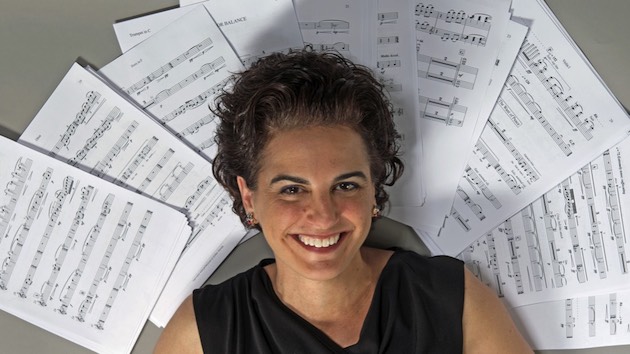
If there were ever a year in which necessity was going to mother a lot of invention, 2020 is that year. There’s a battle of wills in Congress right now about what method we will use to vote in the most important presidential election many of us will see in our lives. And the Cabrillo Festival, reduced to virtual communication and performance, like every music presenter, has actually created the virtual world premiere of a new orchestral piece, most emphatically not coincidentally celebrating the 100th anniversary of the 19th Amendment, which gave women the right to vote: Stacy Garrop’s The Battle for the Ballot.
The Cabrillo Festival runs online from July 31 to August 9. Most of its events are, as has become the pandemic norm, two-person recitals or online conversations introducing recordings of works heard in previous seasons. Quartet San Francisco gives a concert on August 5. And then there’s Garrop’s work, a Cabrillo commission, that will certainly rank among the most inspired uses of technology in the arts this year, even if we all hope that this particular way of presenting music will not be necessary in the future.
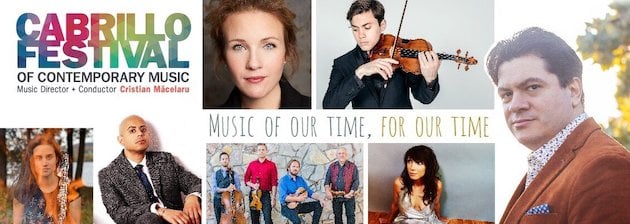
The story begins with Garrop’s commission. She is a composer, she told me, who thinks in formal and structural terms and works outward from what she calls the “movie” of the piece in her mind. “Cabrillo approached me about this piece because Kronos Quartet played my Glorious Mahalia last year,” Garrop explained. “And that was about Mahalia Jackson and Studs Terkel and an interview about civil rights in the 1960s. So I already knew where they were coming from. And Cristy [Cristian Măcelaru, Cabrillo’s artistic director] was very much in favor of having a narrator, so that means text. So one step leads to the next and eventually you find your way through it.”
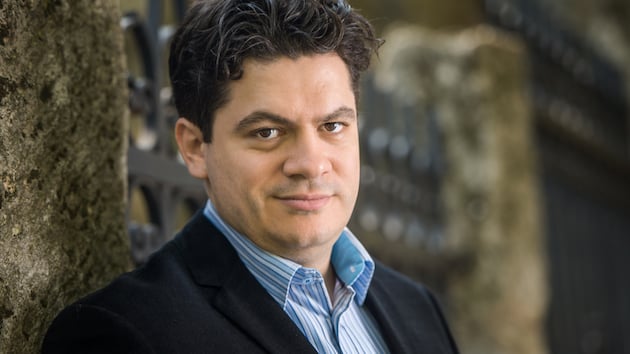
Garrop’s research led her to a speech that Susan B. Anthony gave on a lecture tour in 1872, after she had voted in the presidential election and had been charged with a crime. “The main thing I saw in my head was Susan B. Anthony getting up to the podium, looking a little frail, looking out over this group of people and just starting to lay out her case point by point,” Garrop said.
So far, the composition had progressed pre-pandemic and in January this year, Garrop had actually laid out a portion of the 16-minute work in piano reduction. When the pandemic hit, “Cabrillo said, ‘The pressure’s off, definitely we’ll do it in the next season or two, once we figure out how we’re going to restructure our season.’ But because of my schedule being what it is — I’m booked a couple of years out — it’s like, ‘Well, if I don’t do it now, I’m not sure when I’ll get it done in the next year.’ So I went ahead and wrote the rest of it. And I’m really glad I did.”
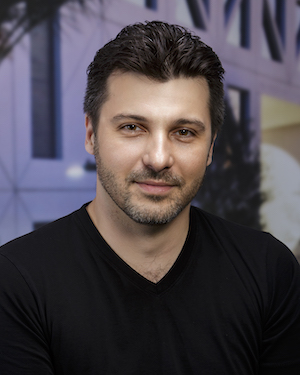
Enter Svet Stoyanov, a percussionist in the Cabrillo Festival Orchestra, who had strong feelings about postponing The Battle for the Ballot. “I realized that this piece is extremely precious in its mission because it celebrates this year 100 years of women’s right to vote,” Stoyanov said, his voice brimming with conviction. “And so I basically had a conversation with the artistic staff of the festival and with Maestro Măcelaru and I asked if they were interested to collaborate on making this piece possible regardless of the challenges we face. And exactly because of the challenges we face, how important it is that we make this a reality. And they were really gracious to trust my passion and we went forward.”
Garrop, having resumed composition, came up against another, nontechnical problem that turned the piece in a new direction, bringing more suffragists into the picture. She tells the story:
When the George Floyd murder happened, that changed everything. And watching all the marching and watching how many people came out, not just Black people but white people, every color banded together and were marching for these rights. And looking at Susan B. Anthony’s own history and seeing some stuff that is not good in there I realized, “This is not the moment anymore.” This might have been the moment a couple of years ago, to have it all be about Susan B. Anthony. Even maybe six months ago, but certainly not anymore.
And at that point I jumped back on the computer and got a bunch of books and did a lot of digging, and discovered some wonderful speeches and writing by all these suffragettes. The NAACP actually has a magazine that they began right after they formed their organization and that magazine is called The Crisis, and you can find it online, all these articles. And they had a whole section of one of their magazines, back in 1915, devoted to the suffragettes and their cause. So one way or another I gathered enough information together to take what had basically been the forum of Susan B. Anthony’s speech, but remove her almost entirely from it — she has a couple of quotes here and there — but instead raise these other voices to the same cause as the speech had really had.
It’s kind of a funny thing, because it’s like “Do I tell people that it was [once] all about Susan B. Anthony?” Well, you know what? This is where we are. I think life — people keep saying “when are we going to have life return to normal?” — you know, with the whole pandemic. And the truth is, life is always moving. It’s never standing still. And I think it’s totally fine to say, “You know what? Six months ago, our society was not really in a place where we thought as much about these things as we do right now.” And where I was wasn’t right either. That was something I should have really thought a little bit more about when I [first] did it. But this is where I am. This is where society is. And now I’m realizing “Oh, I really should have dug much deeper, I should have done this all six months ago.” But I’m really glad with the way it turned out. Now it feels like this is the exact right story to tell.”
The revised piece has quotes from seven suffragists, four Black and three white. And all of them were highly intellectual, deep thinkers whose words Garrop characterizes as “thorny.” Obviously, she reminded me, those words were never meant to be set to music. Garrop’s response was to pare away the music and keep it simple so that the words of the narrator can be heard and understood clearly. And that provides a structure in itself, an ABA form in which the music slowly gathers power and saturates the texture with motives (which, Garrop, reveals, she color-coded to keep them straight.)
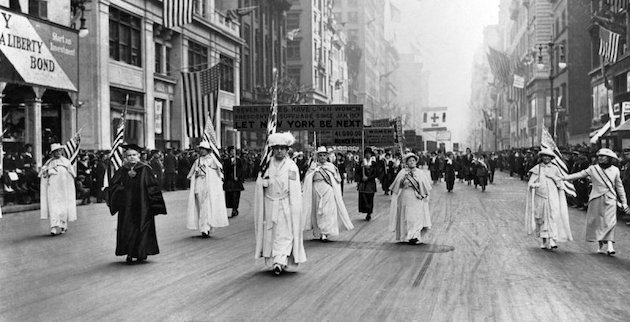
“And then, once the suffragettes tell why this is so important, the orchestra takes over for about four minutes straight. And that’s where they get to go for the gusto. Everyone’s playing loud and all the themes come back one on top of the other. And in my head, that’s where the suffragettes are looking to the future and seeing what we are living right now. [The piece] gets huge and grandiose because their vision has been realized. And then the piece ends quietly, again partly so we can hear the narrator and there are some wonderful quotes by Mary Church Terrell, where she’s saying ‘And so, lifting as we climb, onward and upward we go, struggling and striving and hoping that the buds of flowers we sow will burst into glorious fruition ere long.’
“And the last word, actually, I did give to Susan B. Anthony, which was the final line of the original text, which is, ‘We propose to fight our battle for the ballot all peaceably but nevertheless persistently through to complete triumph, when all United States citizens shall be recognized as equals before the law.’ That’s what I wanted to make sure everybody heard at the end of the piece, so that the story was complete.”
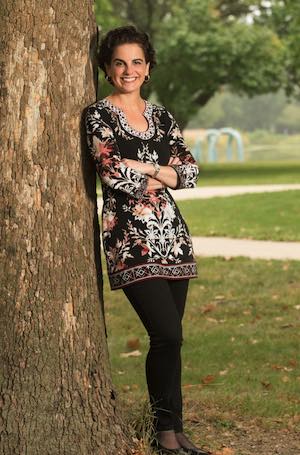
Actually, the story of voting rights is far from complete, but arguably this piece would be less important if it were. Stoyanov, for his part, has invested hundreds of hours so far, in a process that has brought out his stubborn perfectionism, but also his love of the process of musicmaking, his engineering skills, which he has honed at his fully equipped home studio, and his devotion to the message of Garrop’s piece.
It’s not enough, with a premiere, to get musicians the parts. There’s a further process of getting them to get a sense of what the whole piece will be like so that they can “play it with feeling.” The first part of Stoyanov’s process was to get a MIDI (musical instrument digital interface) demo of the whole piece from Garrop, which he shared with all the musicians. Then he also used the demo in the background of the metronome clicks that each musician was provided with so that the musician’s individual recording would be in tempo and synch up with the other musicians. This way, the instrumentalists could remain a little more immersed in the music’s whole shape.
Difficult as the process of recording individually was, Stoyanov reports that it was also joyous, as musicians bought into the mission: “Everybody from the festival’s orchestra who participated was just so very supportive and incredibly accommodating and flexible and willing and excited and it was a joy to collaborate with everybody. Even though everybody was, probably, hundreds of miles away from each other, everybody’s will and passion for this made it feel as if everybody was in the same room, just like when we were at the festival.”
Stoyanov ended up with 200 gigabytes of recorded data, which he separated into visual and audio domains. That was the simple part.
As you can imagine, every person is recording on a different device in a different room under completely unique circumstances. Many of them were with cellphones, and you know when you have different rooms, sometimes they’re echoey, sometimes they’re extremely dark, sometimes extremely bright. And remember, people are recording in real-world scenarios, so we’re talking about, if an airplane happens to fly by you when you’re having the take of your life, what do you do? Do you not send it over because of the airplane flying over you?
I had to do a particular kind of editing that allows me to clean up any noise [but] allows me to keep all the sound of the instruments that were playing intact. And at that point I had to go in looking for imperfections because, as you can imagine, recording with a phone is hard to control, meaning that, if you happen to be playing a little bit too loud and the levels of recording get clipped, because you cannot control this and you don’t really know if this happens. You’re just sending the files because you thought you did a really good take.
The audio mix, accomplished on Stoyanov’s digital audio workstation, posed its own challenges.
“I had to use the deepest and best part of my imagination [to reconstruct] what we really sound like [in concert] and virtually create the same experience but starting from the exact opposite [scenario]. When you’re hearing violins, you’re not hearing seven instruments that are sounding disjointed, but you’re hearing a blended section. We’re trying to create a three-dimensional product from two-dimensional [inputs].
Stoyanov hopes and believes that the incredible work that he has done to bring this project to fruition will not be needed for long. For him, as for all of us, nothing can replace the live performance experience. Garrop’s piece, on the other hand, getting the kind of premiere that will be retold in history books, may well resound in our minds beyond 2020.
Uppermost in her mind, and her collaborators, was the theme: “what is the importance of having the right to vote? And how do we present it so that modern day audiences, who have never really thought about this, can understand why it was so vital for women back in that period.” It’s vital for everybody, as the now-departed civil rights icon Representative John Lewis said, and as his body lay in state in the Capitol Rotunda this year, we have to remind ourselves that, as a country, we’re not done fighting for it.




